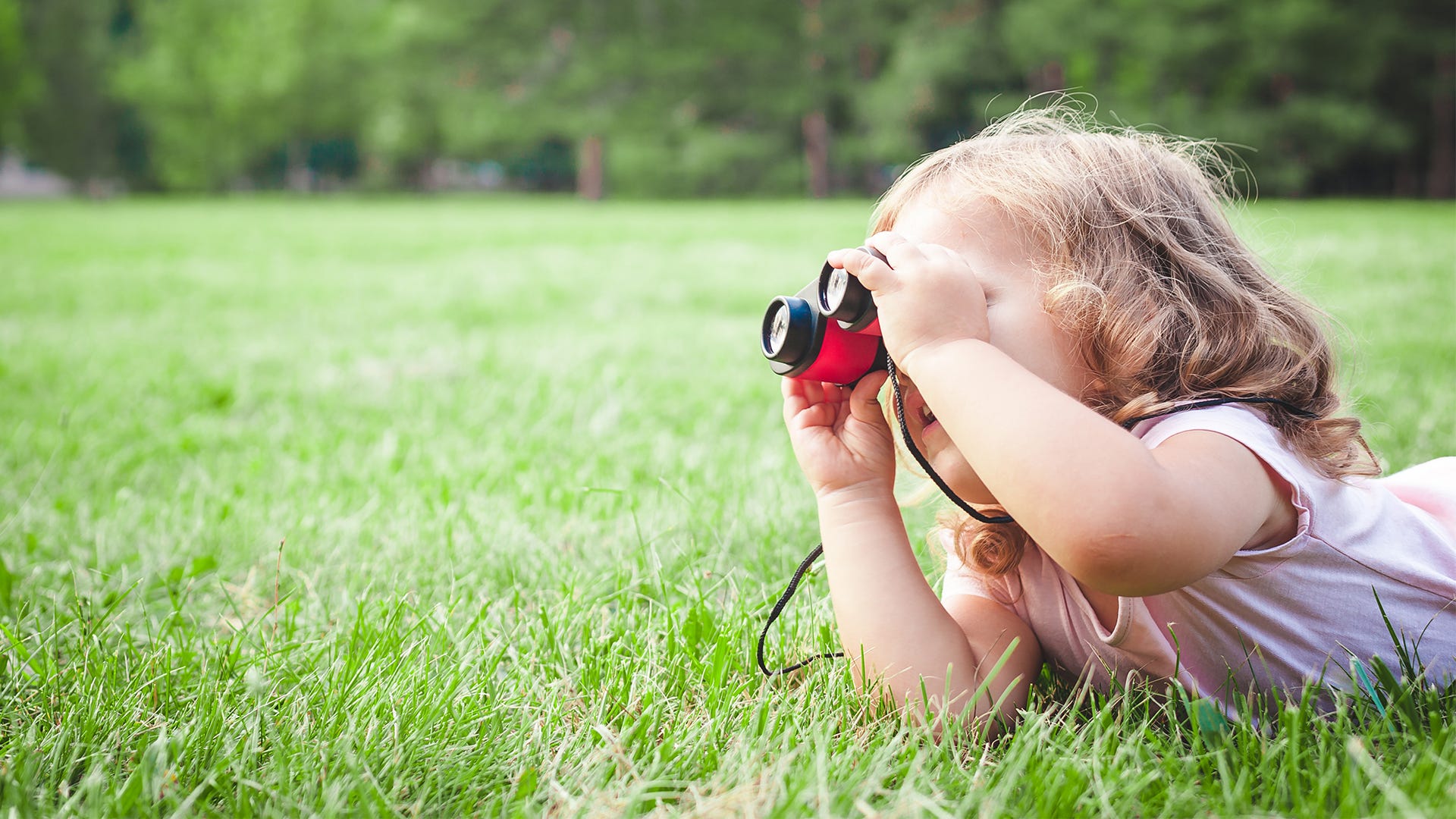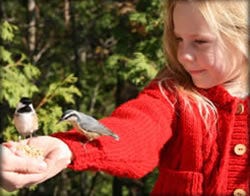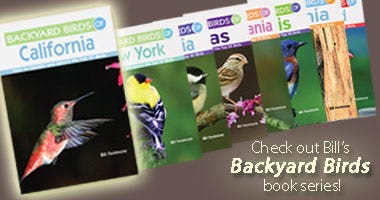
By Bill Fenimore
Bill Fenimore is the author of 50 Backyard Birds state guides (Gibbs-Smith, Publisher) and owner of the Wild Bird Center, Layton, Utah.
One of the delights that I experience on a daily basis in my Wild Bird Center is introducing children to nature. When I was a child in the 50’s, the outdoor world was close to our doorstep. It is further away for today’s youth due to urban and suburban sprawl.
Additionally, there are many competing interests for a family’s time today: sports, video games, computers, etc. Just getting kids outside can be a challenge. When you see children outside, it is usually on a soccer field rather than being in a field, enjoying the natural world.
I have found that birding is a great keyhole into the natural world for families. Birding was the pathway that I followed. I began that journey watching my mother throw out bread crumbs for the birds.
Let me encourage you to pry your children away from the television, computer and video games. Take them outside and introduce them to the natural world. You will be amazed at the fun and adventure that they can have in the wilderness of your backyard. The local park or nature center is a good safari trip too.
Exploring nature in the backyard can be the beginning of their becoming tuned into the rhythms of the natural world. When I take my grandchildren outside, I first tell them to close their eyes and open their ears. We listen and share what we hear. There is the sound of the wind blowing and a black-capped chickadee calling from the oak tree. A house finch is singing in the garden. Splashing sounds from the bird bath. We open our eyes and see a robin.

The children are pleased that they were able to identify these sounds of nature with help from Papa. We search the trees in the garden and find a nest in the crotch of a low hanging limb. I pick each child up, so that they can see the three sky blue eggs inside the nest. We study the nest. Later we compare it to other nests illustrated in a book on nests. A discussion of the nest construction materials (grasses and mud), its cup like shape, location and the egg's color reveals that it is a robin’s nest.
Another singing bird attracts our attention. We see several birds eating mulberries. Studying them with our binoculars, we see a crest on their heads and a black stripe across the eyes, like a mask. Our Backyard Birds of Utah guide shows us that these are Cedar Waxwings.
Experiences like these will light a desire within your children to see and learn more. As you introduce them to the wonders of the back yard, they will start to identify the natural elements around them. My granddaughter Payton once asked me, the answer to a teacher’s question, “What is loss of habitat?” We walked around our neighborhood, looking at places where we had seen wildlife in the past. Homes, stores and a parking lot now occupied the space where deer, pheasant, fox and birds had once lived. Our walk enabled her to answer the question herself.
Children are naturally inquisitive. Help them explore and learn about the natural world. Backyard birding is an excellent way to start. Birds are nearby and available year round. The cast of birds that change with the seasons brings additional discovery and questions to be answered too. Visit your local Wild Bird Center and lean how to start today.








